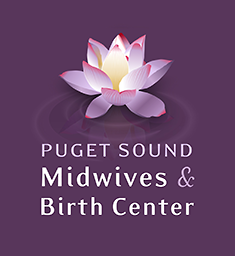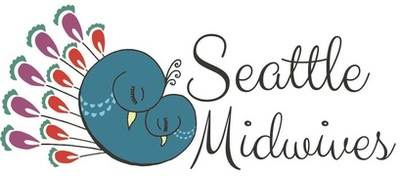|
Everyone knows there's always a hospital nearby to go and have your baby at but what if the hospital isn't the place for you? Where else can you go to give birth in the Seattle area? You may have a ton or only one reason to have an out-of-hospital birth. You might:
No matter your reason(s), where you give birth is your choice and we Puget Sound Doulas believe in choices! (Find out what working with us looks like and how we can help you achieve the birth of your dreams.) We serve ALL Seattle home births, and free standing Birth Centers. And if you're not into these birth places, you can check out our hospital edition. Lucky for us Seattle residents, the Puget Sound boasts several beautiful, serene, and comfortable locations to choose from: 1. Your HomeHome births is growing in popularity and for good reason, too! You don't have to fuss over packing bags, worry about when to leave for the hospital, or who will look after your older children when you go to the hospital. Best of all, Puget Sound Doulas will come to your home, for your Seattle, Bothell, Lynnwood, Bellevue (anywhere within King County and Snoqualmie County) home birth. We work closely with Seattle Midwives (I'm a student midwife working alongside Cindi Thompson, a licensed midwife). Find more information on home births with Seattle Midwives. 2. A Free-Standing Birth CenterThe second position is a 5-way-Tie as each of these location are amazingly beautiful, and offer luxurious, bed and breakfast-like birth suites. Consider yourself warned: choosing a Seattle birth center will be TOUGH! Here are the Seattle Birth Centers that we serve: Cascade Birth Center 2808 Colby Avenue, Suite A Everett, WA 98201 www.CascadeBirthCenter.com Eastside Birth Center 14700 N.E. 8th Street, Suite 115 Bellevue, WA 98007 www.EastsideBirthCenter.com The Center for Birth 1500 Eastlake Ave E Seattle, WA 98102 www.CenterForBirth.com Seattle Home Maternity 3830 South Ferdinand Street Seattle, WA 98118 www.seattlehomematernity.com Puget Sound Birth Center 13128 Totem Lake Blvd NE, Suite 101 Kirkland, WA 98034 4300 Talbot Road S, Suite 402 Renton, WA 98055 www.birthcenter.com So, there you have it! 6 amazing places to give birth in Seattle, WA. Puget Sound Doulas and Seattle Midwives serve every single one of the birth centers listed here so you can sleep a little easier knowing you can have the doula AND midwife of your choice, at the location of your choice. We'd call that a super win!
1 Comment
I'm currently working on a research paper for school. Posted below is my description of conditions and a survey. When my paper is finished I will post the rest of my paper which will include my hypothesis, methodology, findings, and conclusion. In the mean time, if you fit the criteria to take the survey, please do! I thank you in advance! Preventing Childbirth Related PTSD
Description of Conditions When most expecting families think about the birth of their child, they imagine a memorable, emotionally charged, once-in-a-lifetime event. Little do they know, 18% of new mothers report traumatic births; 9% of which have high enough scores to be diagnosed with Post Traumatic Stress Disorder. (Simkin Penny, 2011) In 1980 PTSD was formally listed in DSM-III as an anxiety disorder encompassing symptoms subsequent to exposure to extreme events that were outside the range of usual human experience. According to this definition, childbirth would not be classified as a potentially traumatic stressor, because it is within the range of usual experience for approximately half of the population. In DSM-IV (1994) the stressor criterion was adjusted to stressful situations in which a person had experienced, witnessed, or was confronted with an event that involved actual or threatened death or serious injury, or a threat to the physical integrity of self or others. It also included the subjective response to such events, i.e., feelings of intense fear, helplessness or horror. (Eelco Olde, Onno van der Hart, Rolf Kleber, Maarten van Son, Posttraumatic stress following childbirth: A review, 2006) Childbirth Related Post Traumatic Stress Disorder (PTSD) shows itself in many forms such as: insomnia due to nightmares about the delivery, flashbacks of the event brought on my triggers, complete amnesia of the event, and increased arousal. (Eelco Olde, Onno van der Hart, Rolf Kleber, Maarten van Son, Posttraumatic stress following childbirth: A review, 2006) Childbirth Related Post Traumatic Stress Disorder is reported in all countries, however, the Childbirth Related PTSD is reported at a much higher rate in the US compared to other countries. I will be comparing the differences between the US model of maternity care to many other counties including Spain, Australia, Great Britain, and Brazil. (Jukelevis, N, 2009, Advocating for Women’s Rights to Evidence-Based Care and Childbirth Alternatives in the United States: The Time is Now) I will be looking to determine ways to prevent Childbirth Related PTSD for families experiencing their first birth, to families experiencing subsequent births after being diagnosed with PTSD. Review of Literature This review will summarize six articles about Childbirth Related PTSD. The six articles all speak to different aspects surrounding Childbirth Related PTSD. The articles range from discussing the state of maternity care in the United states, entering parenthood and healing the trauma of PTSD, and prevention of reoccurrence. PTSD itself is a newer diagnoses; it was listed in the DSM-III in 1980 as an anxiety disorder encompassing symptoms subsequent to exposure to extreme events that were outside the range of usual human experience. Childbirth Related PTSD was put under this diagnosis, but was later found to not fit the diagnosis properly. In 1994 DSM-IV redefined PTSD as an anxiety disorder encompassing symptoms subsequent to exposure of stressful situations in which a person had experienced, witnessed, or was confronted with an event that involved actual or threatened death or serious injury, or a threat to the physical integrity of self or others. It also included the subjective response to such events, i.e., feelings of intense fear, helplessness or horror. . (Eelco Olde, Onno van der Hart, Rolf Kleber, Maarten van Son, Posttraumatic stress following childbirth: A review, 2006) The article “Pain, Suffering, and Trauma in Labor and Subsequent PTSD: Practical Suggestions to Prevent PTSD After Childbirth” states a survey found 18% of new mothers reported traumatic births; 9% of these women had high enough scores to be diagnosed with PTSD after childbirth. A smaller survey found results to be higher with 25%-33% of women reporting a traumatic birth; 12% -24% which developed PTSD. (Simkin, Penny, 2011, Part 1 & 2 Pain, Suffering, and Trauma in Labor and Subsequent PTSD: Practical Suggestions to Prevent PTSD After Childbirth) In the article “Advocating for Women’s Rights to Evidence Based Care and Childbirth Alternatives n the Unites States: The Time is Now”, the US maternity model of care is compared to many other countries (Brazil, Great Britain, Spain, and Australia). The United States is the only country which does not provide evidence based practice in regards to birth. It is found that the US model of care follows the practices and suggestions of ACOG (American College of Obstetricians and Gynecologists) – a private funded membership association with no federal oversight and little accountability to the public, which drafts maternity care policies in part to minimize the probability of malpractice claims against their members- these practices are not evidence based and have became a standard of care. The article further compares the US model of care to many other countries which look to the Cochrane Database of Systematic Reviews; which is considered the “gold standard” for scientific evidence on health care issues. This article urges birth professionals to stand up, make a change, educate, and demand evidence based care within our 21st century maternity system. (Jukelevics, 2009, Advocating for Women’s Rights to Evidence Based Care and Childbirth Alternatives in the United States: The Time is Now). The article: Healing the Trauma: Entering Motherhood with PTSD notes that Childbirth Related PTSD is not discussed much in the media therefore it often goes undiagnosed or treated. There are some who have a predisposition to PTSD which are unrelated to childbirth; whether a birth will cause PTSD is specific to each individual. In an additional article Penny Simkin states “One’s perception of the event is what defines it as traumatic or not. As is pertains to childbirth, birth trauma is in the eye of the beholder.” (Simkin, Penny, 2011, Part 1 & 2 Pain, Suffering, and Trauma in Labor and Subsequent PTSD: Practical Suggestions to Prevent PTSD After Childbirth) Next, the article suggests how to avoid PTSD by; choosing the right care provider, carefully selecting the choice of birthplace, avoidance of routine interventions, hiring a birth doula, and having clear communications with all involved. (Griebenow, Jennifer, 2006, Healing the Trauma: Entering Motherhood with PTSD) Penny Simkin’s article Part 1 & 2 Pain, Suffering, and Trauma in Labor and Subsequent PTSD: Practical Suggestions to Prevent PTSD After Childbirth support these suggestions and states “most of the variables associated with Childbirth Related PTSD can be prevented through care in labor that enhances the perceptions of control and support.” (Simkin, Penny, 2011, Part 1 & 2 Pain, Suffering, and Trauma in Labor and Subsequent PTSD: Practical Suggestions to Prevent PTSD After Childbirth) Following the suggestions for avoidance, Healing the Trauma: Entering Motherhood with PTSD speaks to those who have experience with past childbirth related PTSD and gives guidance to minimize a recurrence such as receiving counseling prenatally, finding a new care provider who has experience with supporting families with PTSD, and hiring a doula with experience supporting families with PTSD. (Griebenow, Jennifer, 2006, Healing the Trauma: Entering Motherhood with PTSD) The following articles speak to the benefits of continuous labor support of a doula for birthing families; which was stated in “Healing the Trauma: Entering Motherhood with PTSD” as one of the many ways to avoid experiencing Childbirth Related PTSD from one’s first or subsequent birth. (Griebenow, Jennifer, 2006, Healing the Trauma: Entering Motherhood with PTSD) The Cochrane Collaboration article Continuous Support for Women During Childbirth summarizes results of 21 randomized controlled trials that involved 15,061 women. The Cochrane Collaboration published a similar review in 1989 which focused on the effects of labor support which has contributed to many programs for support around the world. This current review further supports the previous reviews findings regarding one-to-one support during labor which was the main objective of the study. The review goes into further detail examining the choices made available by different care practices regarding additional labor support, policies about epidural analgesia, policies about continuous electronic fetal monitoring, and the timing of the onset of continuous support. The study finds that women who had continuous one-on-one labor support (like that of a doula) were much less likely to: receive an epidural, have a need for an assisted delivery by vacuum or forceps, give birth by cesarean, have a baby with a low 5 minute Apgar score, or report a dissatisfaction with their birth experience. Women who did have one-on-one labor support were more likely to give birth spontaneously, and have a shorter labor. The conclusion states that “continuous support during labor should be the norm, rather than the exception.” (Hodnett ED, Gates S, Hofmeyr GJ, Sakala C, Weston J, 2011, Continuous Support for Women During Childbirth) The article, What is the Evidence for Doulas?, explains what a doula is, what doulas do, and what doulas do not do citing a reference to DONA Internationals (international certifying organization) standards of practice. “A doula is a professional who is trained in childbirth and provides continuous support to a mother before, during, and just after childbirth.” The word Doula comes from a Greek word that means “a woman who serves.” There is an explanation of how a doula’s role differs from that of a labor and delivery nurse, midwife, and husband – “You are delusional if you give birth in a hospital and you expect your labor and delivery nurse to stay with you continuously throughout your labor.” The author points to the Cochrane Review from 2011 which supports continuous labor support for better birth outcomes. The author also states “the best results occurred when the woman had continuous support from a doula, someone who was NOT a staff member at the hospital and who was NOT part of the woman’s social network.” The Cochrane Review 2011 finds that women who received this type of support were less likely to: have regional analgesia, have any analgesia/anesthesia, give birth with vacuum extraction or foreceps, give birth by cesarean, have a low 5 minute apgar score, or report dissatisfaction or a negative rating of their experience. Women receiving support were more likely than those who did not, to: give birth spontaneously (that is, with neither cesarean nor vacuum extraction nor forceps), and have a shorter labor. (Hodnett ED, Gates S, Hofmeyr GJ, Sakala C, WestonJ, 2011, Continuous Support for Women During Childbirth) The article concludes that doulas are effective due to promoting the mothers self-esteem, their skill for specific interventions, and that they are believed to be a form of pain relief to the birthing mother. (Dekker, Rebecca, 2012, What is the Evidence for Doulas?) Over the past couple of years I began to notice that I'm often telling my clients and/or partners a few of the same things while I am supporting them during labor; especially before I've joined them. I have created a quick reference sheet of the most common advice/support I give.
This would be great to print and put on your fridge! Rules for Labor: Early Labor (ctx 6-20 min apart lasting 20-50 sec, 0-3cm): Ignore it. If you are tired, sleep. Do not try to "walk" yourself into labor. If it is an unmedicated birth you wish to have, you will need your energy later. Do as you would normally do for this time of day. EAT (as if you were preparing for a marathon). Drink a TON of water. Pee every hour. Do the "miles circuit": http://www.milescircuit.com. Do not time ctx until they seem to be coming like clockwork every six min or so and are lasting for at least a minute. Give your Doula a heads up! (Any blood when you wipe is a GOOD thing, it tells us your cervix is changing! Vomit, poo... are both great too!) If you water brakes... awesome! No big deal, just note the color. ************ There is normally a big change that happens in a mom behavior between Early/Active Labor. Mom may go from very happy and talkative to be inwardly focused and unable to talk during ctx, this is a great time to call your doula and have her come over. ************ Active Labor (ctx 3-5 min apart lasting 50-90 sec, 4-7cm): Call your doula. Get active! Move, move, move. Do not stay in the same position for more than 45 min - hour. (Every position change will spur a strong ctx, don't be afraid, you can do this.) Gravity forcing positions are the best (unless you have back pain- if you do, hand a knees all the way! A heating pad on you lower back or pressure applied to lower back should also help.) Eat. Drink. Pee. Repeat. Great time to use the tub. Doula should be with you at this time. Use your breath as a tool. (Good time to go to birth place. If choosing to use medication, this would be the time.) Transition (ctx 3 min a part 90 sec, 8-10cm): Tub, tub, tub! You can do this. This is the strongest, shortest time in labor. It will feel so good when this passes and you can push. During transition not much with really "work" to relieve what you are feeling, this is a time when most women want to run away. Hold strong. You are so close. Get loud, deep low moans exert much less energy that high pitched moans. Feel free to get mad at it every now and then. Sink into it, let it be, try not to pull away. Find a focus, something to pull you through. Communicate when you can in between so we can best serve you. Pushing: Gravity forcing positions are great. If you need a rest, side lying works well. Think of opening your pelvis. Remember that it takes a while for most women to get pushing "down", if you want/need more direction please ask, there are a lot of tips we can give, we just do not want to interrupt your work. First time moms normally push for 1-2 hours. Pushing feels good! For the first time you get to work WITH your body and not just "deal" with it. Happy Birthing! Love, Your Doula |
Details
Resources
All
Archives
June 2018
|
|
"Not only did I have one expert, I had a whole team of experts ready to support me no matter what. I loved that I was able to meet and spend time with both doulas, there was a great comfort in that. My birth ended up be very long, and the team switched out which gave us a fully rested doula with a new and fresh perspective."
|
Seattle Birth Doula support for home births, water births, hospital births, birth center births, VBAC births in Seattle, Kirkland, Lynnwood, Everett, Edmonds, Snohomish, Bellevue, Bellingham, Mount Vernon, Marysville, Everett, Olympia, Tacoma and surrounding areas. Additional services include Placenta Encapsulation in Seattle, Kirkland, Lynnwood, Everett, Edmonds, Snohomish, Bellevue, and surrounding areas and excellent local resources for Childbirth Education Classes, Maternity, Birth, & Newborn Photography, and more. Learn about the difference home birth Midwifery care during pregnancy and birth can make with Seattle Midwives.
Puget Sound Doulas in Seattle, WA serving: Lynnwood, Edmonds, Shoreline, Seattle, Capitol Hill, Greenwood, Wedgewood, Ravenna, Northgate, Beacon Hill, Queen Anne, Bellevue, Kirkland, Redmond, Renton, Bellingham, Mount Vernon, Marysville, Everett, Olympia, Tacoma
Puget Sound Doulas in Seattle, WA serving: Lynnwood, Edmonds, Shoreline, Seattle, Capitol Hill, Greenwood, Wedgewood, Ravenna, Northgate, Beacon Hill, Queen Anne, Bellevue, Kirkland, Redmond, Renton, Bellingham, Mount Vernon, Marysville, Everett, Olympia, Tacoma







 RSS Feed
RSS Feed
